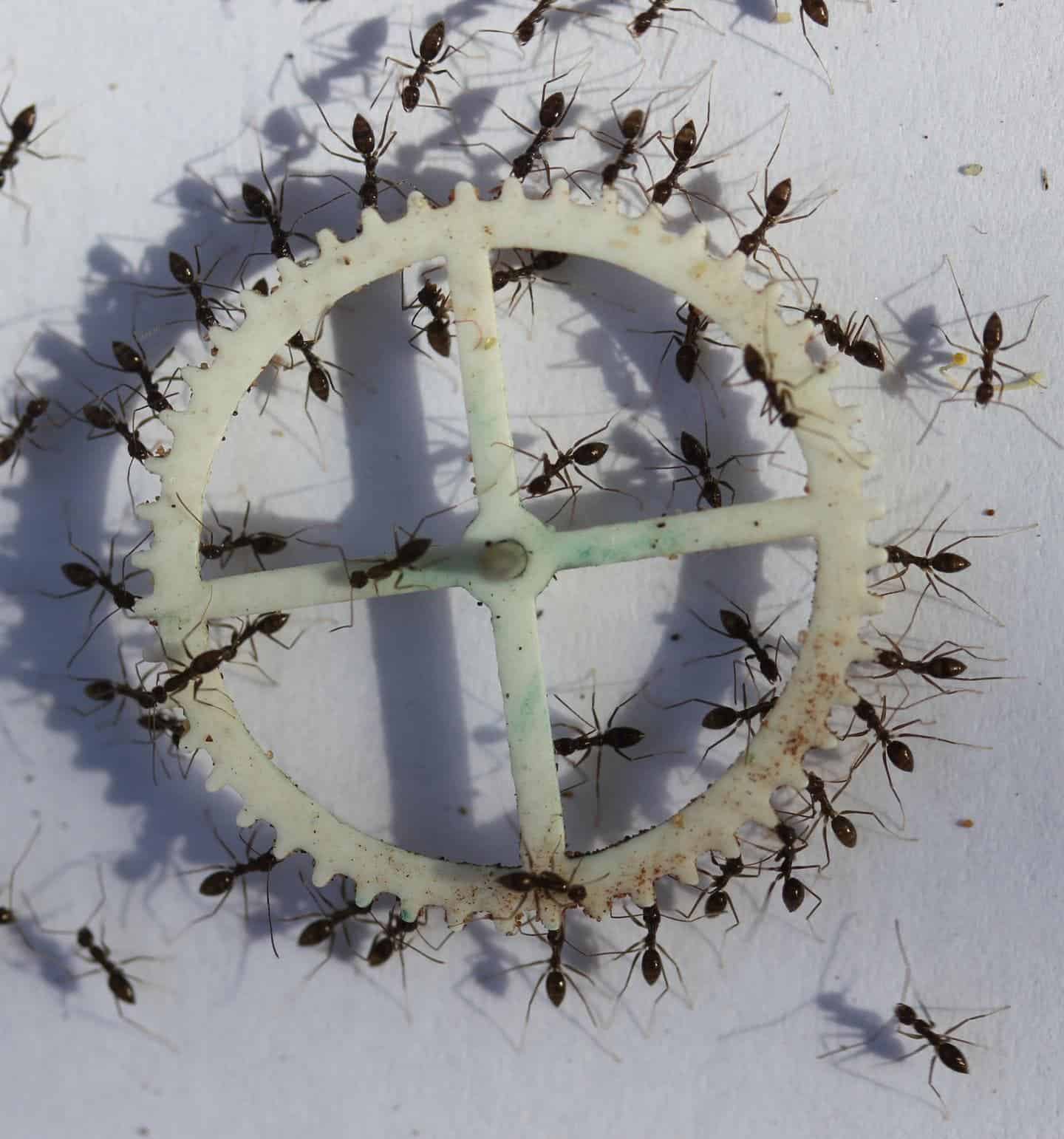As anyone who has ever worked in a group can attest, it is hard for everyone work together to reach a common goal and conquer obstacles. Large groups of ants often also face obstacles as they carry large pieces of food back to their nest. They need to be able to coordinate the whole group to successfully bring back the tasty morsel, without the luxury of language. Research published in PLOS Computational Biology has unveiled the strategy that the ants use to coordinate their groups.
Ants often find large nuggets of food, like a worm or maggot, that would feed their colony but also requires joint carrying by dozens or hundreds of ants. The ants need to be able to work around obstacles as a large group. According to senior author Prof. Gov, ants carrying the object are “programmed” to cooperate and they tend to help the group to carry the object in the already chosen direction of motion. They are just followers and even a random disturbance will get them going in a random direction. It’s up to the “informed” ants to lead the group to the nest following a scent trail. To figure out how ants coordinate their movement, researchers first built a mathematical model and then tested it out with real ants.
The researchers built a simulation in which ants carrying a load encounter a barrier with a narrow hole. The results showed that ants avoid obstacles by alternating between two types of motion: dwelling near the hole to pass the food through the hole or moving sideways to seek a route around the barrier.

Ants carrying the object in the controlled laboratory setting. Image credits: Jonathan Ron, Ehud Fonio.
The method used depends on the size of the ant group. When the group is smaller, it is likely carrying a smaller piece of food and will spend more time near the hole. Larger groups with larger food items have less of a chance to push their food through the hole and therefore perform more sideways motions to find a route around the barrier. The combination of the two motion types allows the ant group to find a solution that works.
The researchers then tested their predictions on actual ants, using objects ranging from 1 cm to 4 cm in diameter. The ants confirmed the hypothesis by switching between both movement types. Smaller groups spend more time near the hole instead of finding a way around the obstacle.
“This study shows that an animal group, when confronted by some external challenge or problem it needs to solve, may indeed solve it without any single individual in the group actually realizing what is the problem, and how to solve it.
The group behavior may in fact be rich enough to offer appropriate solutions. Here the group behavior is found to allow two possibilities, either being “stuck” near the opening or performing larger sideways excursions along the barrier. Small objects that could possible be squeezed through the opening indeed tend to spend more time there, while larger objects spend more time going sideways, as if the ants know that for such large items they need to find a detour,” said senior author Prof. Nir Gov from the Department of Chemical Physics at the Weizmann Institute of Science to ZME Science.
The ants are then able to choose the best strategy for their obstacle and coordinate their whole group in the same direction—an inspiration for us all.
Journal reference: Ron JE, Pinkoviezky I, Fonio E, Feinerman O, Gov NS (2018) Bi-stability in cooperative transport by ants in the presence of obstacles. PLoS Comput Biol 14(5): e1006068. https:/









